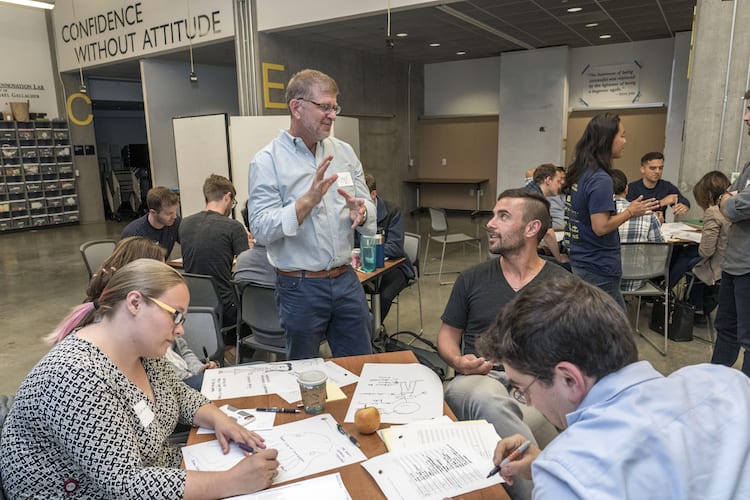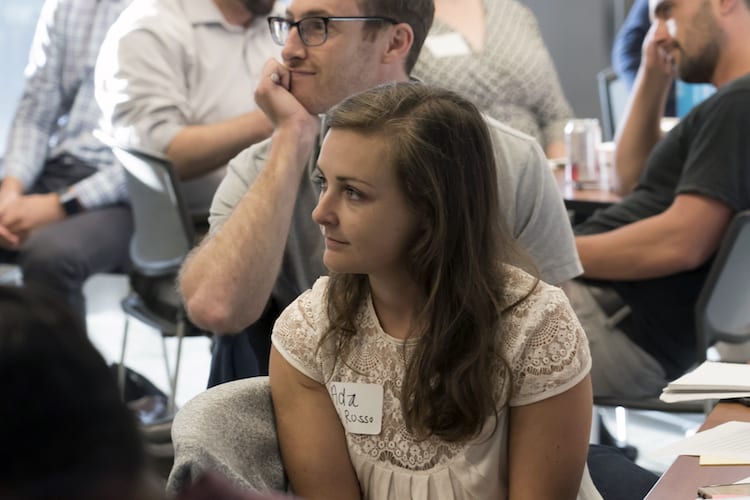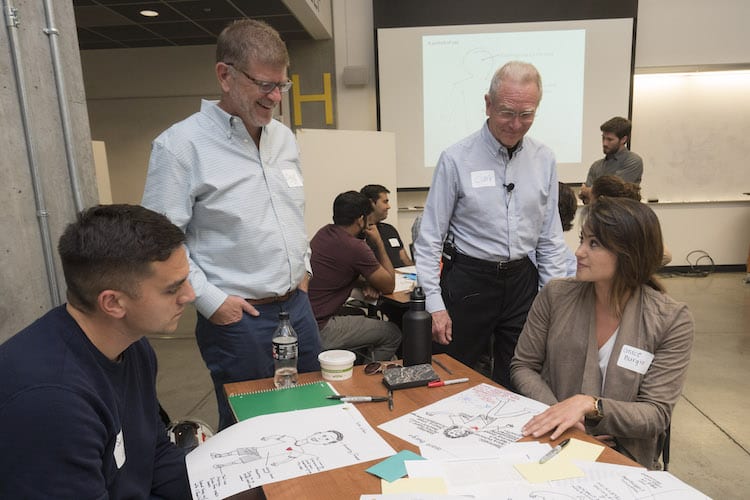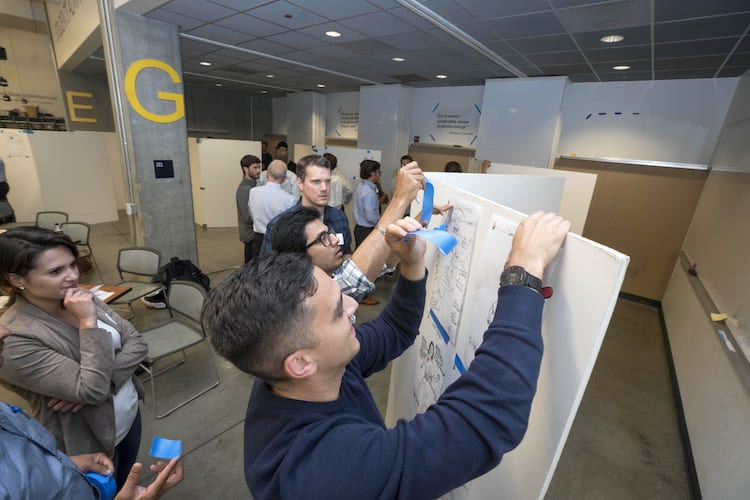
A cohesive school-wide curriculum around design thinking launched this week, which includes a new design thinking course, intense “design sprints,” and an expanded pool of lecturers with deep work and teaching experience in design thinking.
“We are creating a common language, methodology, and Haas framework that aligns with the design thinking processes used extensively in industry,” said Dave Rochlin, lecturer and executive director of the newly formed Innovation, Creativity, and Design Practice at Haas. “The mindset, tools, and methods will help Haas students tackle the ambiguous and open-ended challenges that characterize post-MBA work.”
The curriculum’s foundation is a new one-unit core course called “Fundamentals of Design Thinking,” which aims to provide students with a common set of tools, processes, and strategies to creatively solve complex business problems. The new class kicked off in August, offered first to Evening & Weekend MBA students.

“The design-thinking mindset is the starting point for new ideas,” said Clark Kellogg, a lecturer in design who is also a co-founder of The Berkeley Innovation Group, an innovation consultancy. “If we think the same thoughts in the same way, we generally get more of what we already have. This course is about when and how thinking differently is useful and, importantly, when it’s not useful.”
Kellogg and Rochlin developed and co-lead the new course, which will be offered to full-time MBA students this spring.
Design thinking goes mainstream
Held in the Berkeley Haas Innovation Lab, the course includes five modules: the design thinking mindset; observation, interviewing, and ethnographic research; making sense of qualitative research and generating insights; ideation and prototyping; and experimentation and storytelling. Kellogg wrote an online textbook for the course called “Fundamentals of Design Thinking: Advanced Common Sense in the Age of Speed.”

As a methodology, design thinking has slowly evolved since it emerged during the 1960s and was adapted for business purposes in the 1990s, led by the design consultancy IDEO. Since then, design thinking has gone mainstream, used in companies from P&G to Salesforce, and consulting firms such as McKinsey and Deloitte.
Haas was an early pioneer in integrating design thinking in the core MBA curriculum. Kellogg, along with Haas Senior Lecturer Sara Beckman, launched “Problem Finding, Problem Solving” over a decade ago. Students often cite the class as giving them the edge in victories over MBA teams from other schools in case challenges and other competitions.
Non-traditional problem-solving
Yet as design thinking has evolved, and more students have come into the program with experience with these tools, it was time to build a new core course.
“In 2011 students didn’t even know the term ‘design thinking,’ Kellogg said. “Very few people had encountered it in their work. Today it’s a completely different landscape. The field has grown, evolved, and normalized. It felt like an important moment to create a course that’s about today’s practices and non-traditional ways of problem solving.”

The class requires students to work together on small teams on collaborative projects. It will draw on the skills and work experience of a pool of lecturers, who bring expertise on different topics. Students’ mastery of material will be put to the test during a problem solving “design sprint” at the end of the course.
The goal of the larger Innovation, Creativity and Design Practice is to expand the portfolio of related courses such as storytelling, prototyping, and needs-finding. The practice will also better integrate design thinking skills into Haas’ existing project-based courses such as Haas@Work, the school’s applied innovation program, which Rochlin directs, International Business Development (IBD), the school’s flagship global management consulting program, and Cleantech to Market, a partnership between students and professionals to help accelerate commercialization of emerging cleantech.
“This course is just the start,” Rochlin said. “It will be part of a larger program that integrates a common way of teaching innovation and design methods across Haas.”